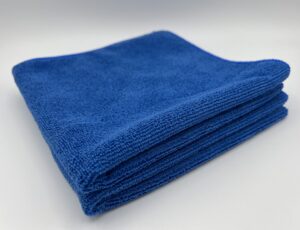 Hygiene is obviously a critical concern in hospitals. Patients expect everything around them to be as clean as possible, to minimize the risk of contamination and infection.
Hygiene is obviously a critical concern in hospitals. Patients expect everything around them to be as clean as possible, to minimize the risk of contamination and infection.
Hospital-acquired infections (HAIs) are a real fear for anyone undergoing treatment, and healthcare facilities are expected to ensure the highest standard of hygiene in every area. Around 1.7 million HAIs occur in America’s hospitals per annum, costing an estimated $20 billion.
Microfiber can prove to be a powerful tool in keeping hospitals clean, but why?
Microfiber’s Hygienic Power
Microfiber towels and cloths are made from polyester and polyamide, with each fiber finer than a human hair. These are all woven together tightly to form a material absorbent enough to hold as much as eight times its weight in water.
This makes microfiber an efficient cleaning solution, as the microfibers are able to trap particles of dirt that other materials would miss. No dust or lint is left behind.
Microfiber provides such a thorough clean that hospitals can cut right down on the amount of expensive chemical-based cleaning products they use.
Microfiber can be used with water only, without sacrificing its effectiveness. Microfiber towels, pads, cloths, and mops all absorb more water too, which means cleaning crews use less of it during their rounds. Hospitals will reduce their water costs and corridors will be left less slick, leading to a safer environment for workers and patients alike.
In all, microfiber cleaning products have been shown to use 95 percent less water and chemicals.
Microfiber’s efficiency boosts janitors’ productivity too, as less time is wasted refilling water buckets and re-cleaning the same areas again and again. As a result, more cleaning can be performed in less time, boosting hygiene throughout the entire hospital.
Microfiber and Cross-Contamination
Microfiber towels and cloths are produced in lots of different colors, including greens, blues, and reds. As a result, cleaning crews can color code their work to minimize the risk of simply spreading bacteria from one surface to another.
For example, one color can be used to clean glass, another for dusting, a third for floors, and a fourth for disinfection. All janitorial staff will be familiarized with the color coding system quickly, and boost the hospital’s hygiene simply by following the guidelines.
As microfiber towels, cloths, and mops are more durable than other cleaning materials, they can withstand more heavy usage over time. Hospitals can reduce their expenditure on replacements and ensure that they get more value for money.
Texas Microfiber produces an extensive range of towels and cloths for hospitals, designed to provide the most effective clean. Want to know how we can help you create a more hygienic environment? Get in touch!

Comments are closed